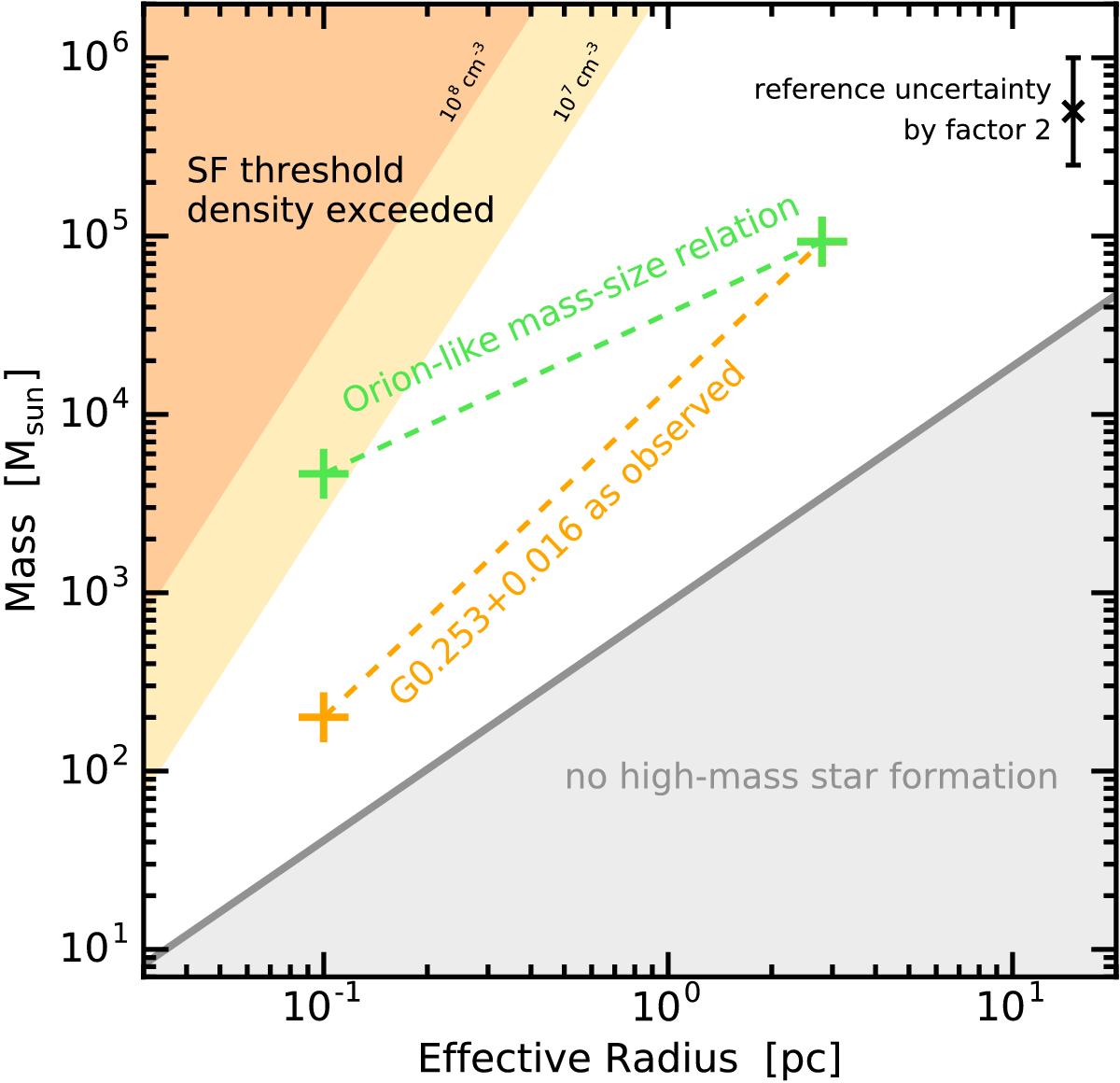Fig. 5

Impact of mass-size slopes, that is density gradients, on CMZ star formation. The gray shading is taken from Fig. 3. The brown-orange shading indicates where spheres would exceed the star formation density threshold. The shading gradient indicates the uncertainty in nSF,lim, here taken to be in the range 107 to 8 cm-3. The orange cross and dashed line indicate the mass-size trend observed for G0.253+0.016. The green crosses and dashed line indicate the mass-size relation of a model cloud that has the same total mass and size as G0.253+0.016, but follows a more shallow mass-size relation (i.e., steeper density gradient), which is taken here from observations of Orion. The error bar indicates a representative uncertainty in mass measurements by a factor 2 (Sect. 3). In summary this diagram shows that shallow CMZ density laws help to suppress star formation because little or no gas at all exceeds nSF,lim.
Current usage metrics show cumulative count of Article Views (full-text article views including HTML views, PDF and ePub downloads, according to the available data) and Abstracts Views on Vision4Press platform.
Data correspond to usage on the plateform after 2015. The current usage metrics is available 48-96 hours after online publication and is updated daily on week days.
Initial download of the metrics may take a while.


